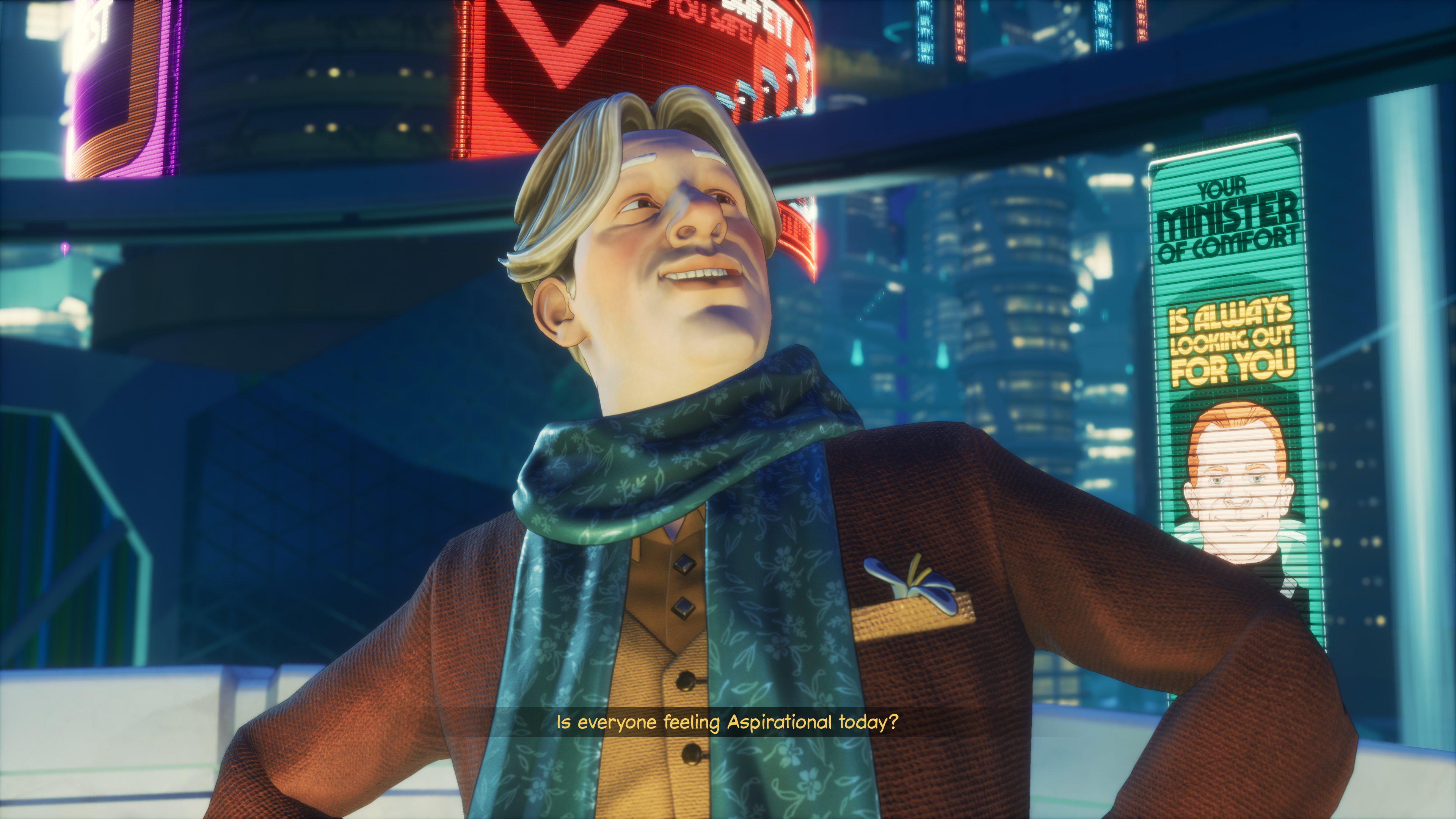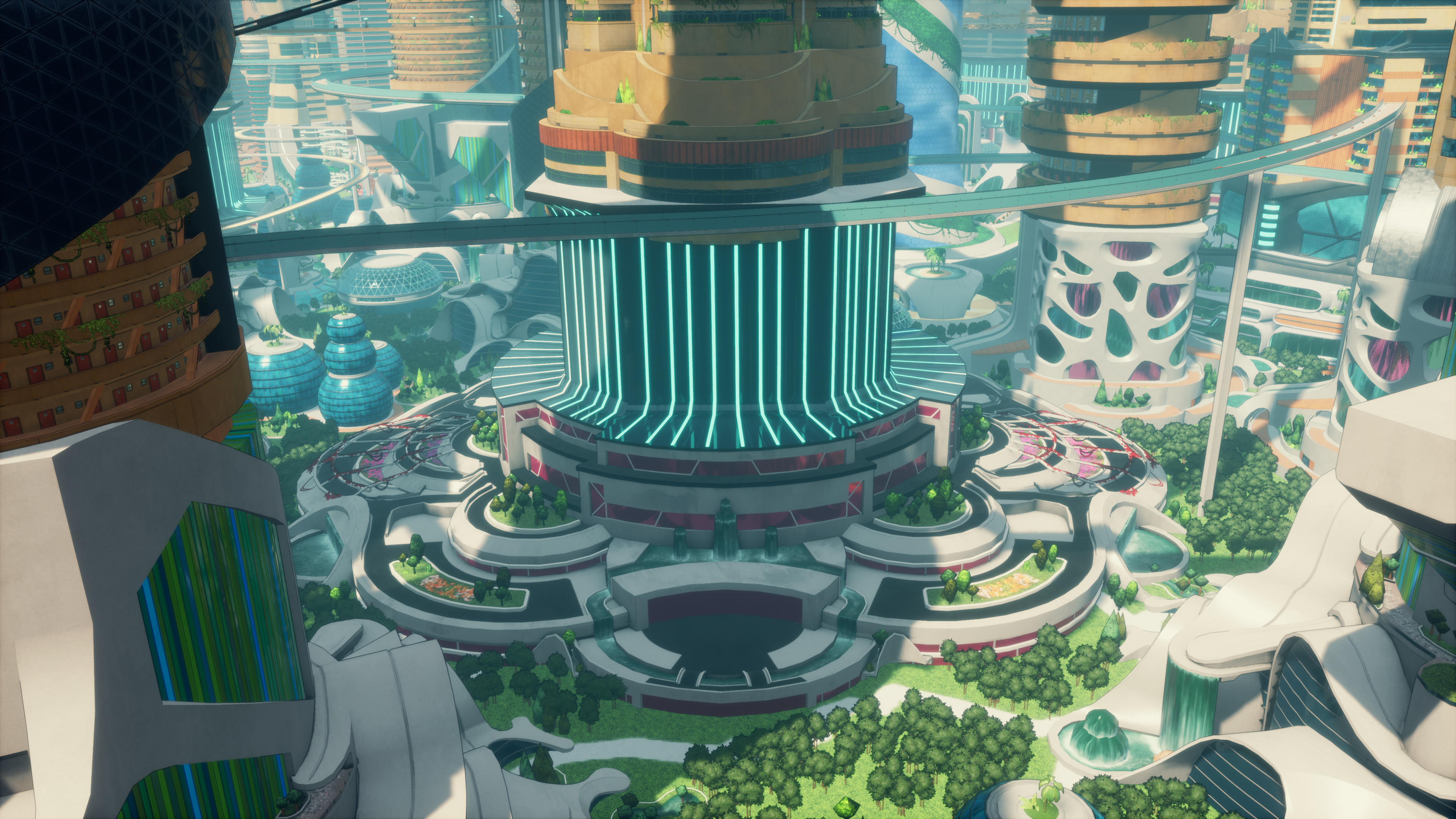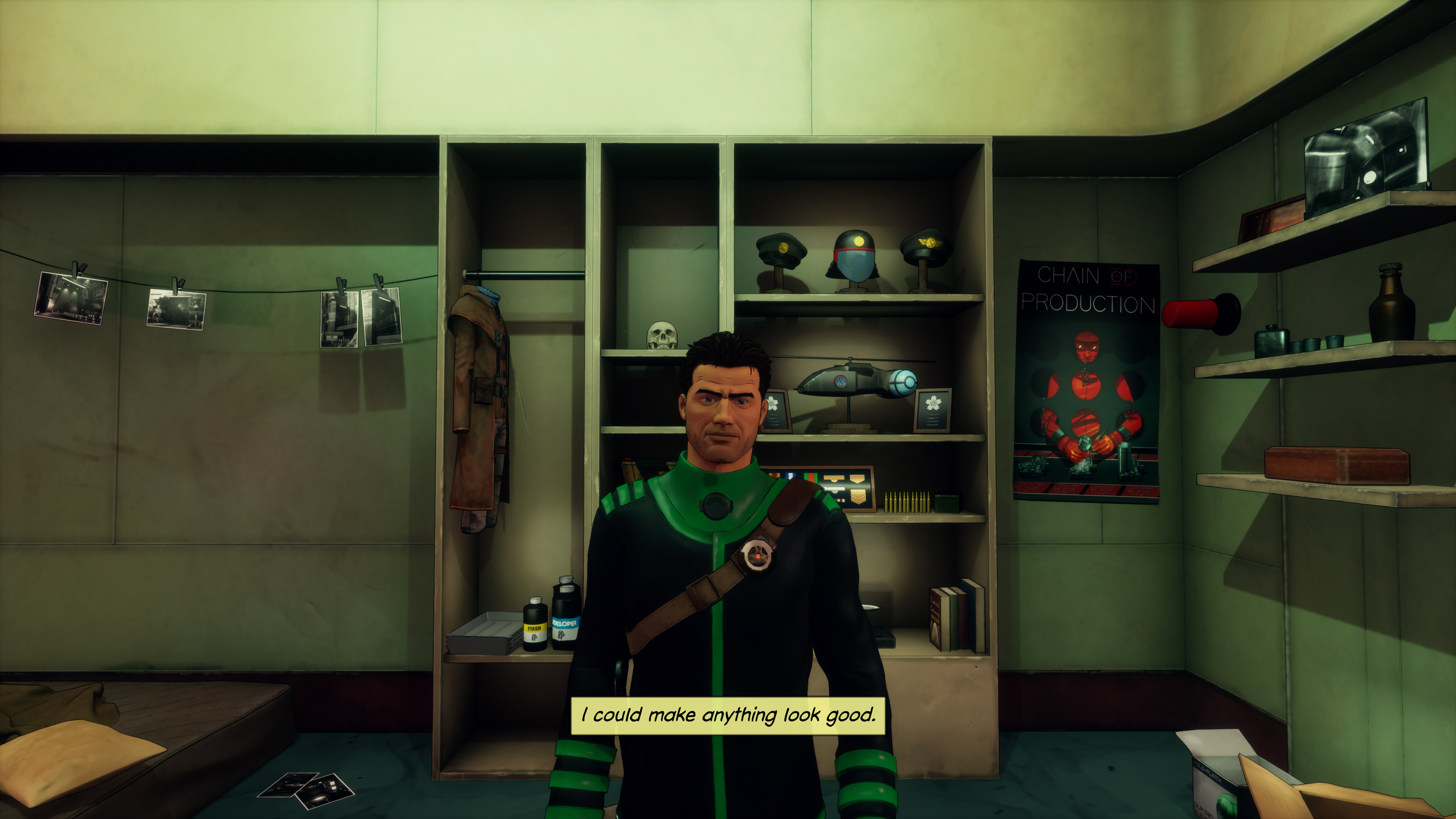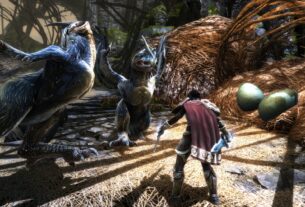
What is it? A cyberpunk adventure game
Reviewed on: Windows 10, Threadripper 2950X, 64GB RAM, GTX 1070Ti.
Price: $35/£30
Release date: July 16
Publisher: Revolution Software
Developer: Revolution Software
Multiplayer: No
Link: revolution.co.uk
The 1994 adventure game Beneath A Steel Sky was considered quite good (like 91% good), and to call it fondly remembered would be to mine giant quantities of understatement from the red Australian sands. A collaboration between Revolution Software and comic-book artist Dave Gibbons, Beneath A Steel Sky addressed social divides, consumerism and totalitarian control through pointing, clicking, and solving puzzles. And now, in 2020 of all years, it gets a sequel.
The last time Robert Foster was in Union City it was under the benevolent authority of his pal Joey. Ten years later, he’s dragged back on the trail of a missing child, and rocks up at a vehicle-only entrance to the city (any excuse for a puzzle) to find it’s now under the control of The Council, and that everyone is really happy. They’ve got to be, because their lives hang on their Qdos scores, which quantify their social standing. It’s nudge theory run rampant, as things like turning up for work and taking part in daily votes (you never do this, which is a shame) alter your score, which affects where you can go and how low in the towering arcologies you can live. Industry and recycling are at the top, with the lower levels being a playground for the high-scoring.

Despite the existence of this system in the world, Foster, masquerading as Graham Grundy after taking an ID chip from a dead man in the desert, prefers to work around it by running errands for NPCs, using a hacking device to rearrange electronic information to his advantage, and directly manipulating the system in cyberspace. While you spend much of your time with the cream of society, it’s those at the bottom, or rather the top, who are actually more interesting. Thumb-obsessed murderers and genius hackers lurk among the Monty Python-quoting droids and piles of junk at the tips of the steaming spires, their dimly lit world of furnaces and garbage crushers in stark contrast to the bright, wide plazas they labour to support.
Upside down
Beyond might as well have been called Beneath Beneath a Steel Sky, such is the enormous shadow it chooses to live in.
Of course, this world of hi-tech Eloi and Morlocks wouldn’t be the same without a dark secret at its heart, and an opening sequence involving screaming kidnapped children makes this very clear. Layers of high crimes and misdemeanours build on each other, the twisted logic at their core like something from a monstrous episode of Black Mirror. While Beneath A Steel Sky showed that a sick society could be saved by a good man (or robot), Beyond sees a utopia exposed and torn down, the nobility and enormity of its characters setting them against one another.
Beyond might as well have been called Beneath Beneath a Steel Sky, such is the enormous shadow it chooses to live in. It burns brightly in spite of this, the lightly cel-shaded art has never looked better, and the update from point-n-click to WASD is a positive choice. The narrative wraps itself around that of the first game, although it doesn’t matter if you haven’t played it (but you should).
The game just cannot help itself, however, from piling reference upon reference. PC Gamer’s 2016 retrospective of the original brought up the northern English slant to the voice acting, jarring for a game supposedly set in Australia. Beyond tackles this with a history lesson stating many of the city’s builders came from Hull—the city in which much of the ‘90s development work took place. There’s a throwaway line in a conversation about an industrialist wearing a nice coat. Then comes a biggie: “Reboots are fine,” says one character, who’s possibly Welsh, “but they’re never a patch on the original”. There’s the entire museum dedicated to the world of the first game. The obsolete LINC terminals are scattered around. A trip into the industrial facilities at the top of the city that evokes Beneath’s cover art. It never stops.

Tech troubles
Beyond a Steel Sky is built on Unreal 4, and mostly runs very nicely. Unfortunately, it’s also possessed of weird graphical glitches such as characters walking into you when you’re in the middle of a conversation (or jumping to shoulder height and walking on the spot—this is earmarked for a fix), your long coat constantly clipping through whatever you’re standing next to, and a whole virtual world level that juddered violently for me whenever the camera moved. The jerking about continued into the real world too, requiring a restart of the game. Unable to jump, Foster gets stuck on absolutely everything, even the outstretched leg of a corpse on the ground. The subtitles are also full of typos, with the occasional errant question mark perhaps attributable to Australian Question Intonation, but not the misplaced apostrophes, multiple spaces between words, and misspellings.
GPU drivers can be updated and subtitles patched, but there are also occasional failures of logic too, odd for a game whose denouement is tied up in paradoxes and reasoning. A social-climbing character completely fails to notice that Foster is wearing a badge that marks him out as exactly the sort of aspirant he wasn’t the last time she spoke to him. Puzzles can plunge into a maddening game of throwing every switch and trying every object with everything in your inventory (though there is an excellent hint system if you’re really stuck). An empty light socket looks very much like every other one. Why is there an electric fence behind the waterfall when there’s no way through? How can Foster hide in lockers but not enter toilet cubicles?
Moments of head-scratching are nothing new in adventure games, of course, and they do nothing to detract from the superb world Revolution has constructed. Is it a patch on the original? Not a patch, but an upgrade. It’s destined to have less cultural impact thanks to the recursion of its influences, and Beneath’s innovations having been adopted by the wider industry, but this is surely the best 11 hours you can spend in the Australian desert.
Read our review policy
Filled with what made the original game great, this second trip to Union City has been worth the 26-year hiatus.



